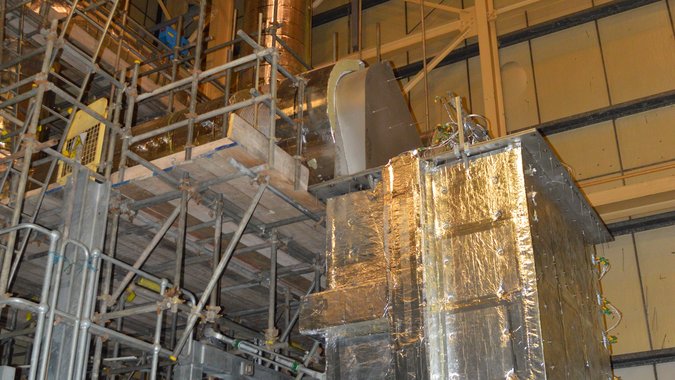
Ansaldo Nucleare and Westinghouse Electric Company say initial testing has been completed for their Generation IV lead-cooled fast reactor design. The testing campaign took place at the Passive Heat Removal Facility recently built at the Ansaldo Nuclear plant in Wolverhampton (UK).
The work was performed under a contract within Phase 2 of the Advanced Modular Reactor (AMR) programme partially funded by the UK Government's Department for Business, Energy & Industrial Strategy (BEIS), which was awarded to Westinghouse with Ansaldo Nucleare as the main supplier. Under this contract, Ansaldo Nucleare led the design, purchase, installation and commissioning of two experimental facilities to support Westinghouse's lead-cooled fast reactor (LFR) technology. The Versatile Loop Facility (VLF) and the Passive Heat Removal Facility (PHRF) will collect experimental data supporting accelerated development of LFR technology.
The £10m ($12.5m) UK government investment will enable Westinghouse to test the feasibility of key LFR’s materials, systems and components. The VLF will test a fuel pin bundle simulator, a compact heat exchanger and a coolant pump, resembling those that will be installed in the reactor coolant system. The PHRF will characterise the passive decay heat removal system of the Westinghouse LFR, producing experimental data for the qualification of computer codes devoted to performance assessment.
Ansaldo Nucleare CEO Riccardo Casale noted: “Together with the UK subsidiary Ansaldo Nuclear Ltd, Ansaldo Nucleare remains at the forefront of Westinghouse Lead Fast Reactor development: a fruitful collaboration we can only be proud of.” Mark Urso, interim Chief Technology Officer of Westinghouse said: “Moving into the testing phase utilising these large-scale test facilities clearly demonstrates the maturity of the reactor development project that Westinghouse and Ansaldo Nucleare are advancing.” He added: “Our project goes beyond design and modelling activities, and includes hands-on activities contributing to enhancing our practical knowledge of LFR technology.”
This is part of the wider initiative launched by a cooperation agreement signed by Westinghouse and Ansaldo Nucleare in October 2022 for the joint development of Generation IV LFR technology globally, and with near-term emphasis in key European countries such as UK, Romania and Belgium. The two companies agreed to
advance a common design to maximise synergies, combine experience in design, testing and licensing, and align respective partner and supply chain organisations. Westinghouse said the agreement builds upon development activities already underway in the UK, USA, Italy, and Romania, where more than ten state-of-the-art, lead-based test facilities are being installed.
The Westinghouse Lead Fast Reactor is one of eight liquid metal cooled fast neutron spectrum SMRs described in detail in the International Atomic Energy’s comprehensive publication on Advances in Small Modular Reactor Technology Developments published in 2022. It is a medium-output, modular construction plant harnessing a lead-cooled, fast spectrum core operating at high temperatures in a pool configuration reactor. Westinghouse says the simplicity of its safety systems, high-efficiency advanced ultra-supercritical water balance of plant, compact reactor building, absence of high-pressure containment, streamlined modular construction, and integrated non-reactor-based load following capability results in unparalleled economic potential”. IAEA lists it as being in the conceptual design stage.
The only one of the fast reactors listed, which has gone beyond the design stage, is Russia’s Brest-OD-300 LFR which is already under construction at the Siberian Chemical Combine in Seversk. Installation of the reactor base plate began in July 2022 and the reactor is scheduled to begin operation in 2026.
According to the design milestones listed by IAEA for the Westinghouse LFR, the 2020s – 2025 will see the design development and licencing process and additional testing to validate enhancements to the plant performance. Start of construction of the first of a kind (FOAK) LFR demonstration plant is planned for 2025-26. In 2030 the demonstration plant is expected to be generating up to 300 MWe. Subsequently a 450 MWe FOAK plant representative of the commercial fleet will be licensed and deployed.